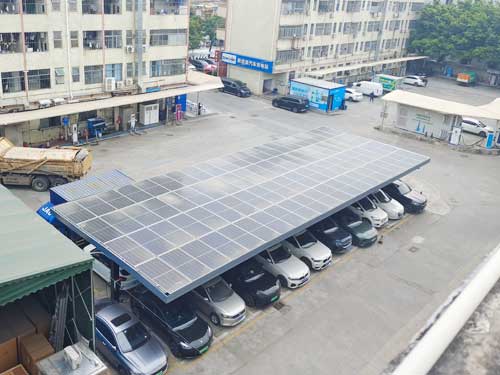-
 +86 18924678741
+86 18924678741 -
 sales@hjlcharger.com
sales@hjlcharger.com -
 Shenzhen City, Guangdong Province, China
Shenzhen City, Guangdong Province, China
Charging station uk: three keys to crack charging anxiety
1. Supply and demand imbalance and cost challenges
By 2024, the number of electric vehicles in the UK will exceed 1.5 million, but there will be only 53,000 public chargers, with a ratio of electric vehicles to chargers of 28:1. The premium for supercharging stations in highway service areas during peak hours has soared to £0.85/kWh, and with an average parking fee of £4.5, the cost of a single fast charge is three times higher than that of home charging. There is still a 300-kilometer charging blind spot in remote areas such as the Scottish Highlands, which restricts long-distance travel for new energy vehicles.
2. Charging network efficiency innovation
2.1. Intelligent load management system
Highway service stations deploy dynamic power allocation technology, and the power supply capacity of a single station is increased from 800kW to 1.2MW. Eight superchargers can operate at 150kW at the same time, and the charger utilization rate is increased to 82%.
2.2. Integrated photovoltaic storage and charging station
The London Heathrow Airport parking lot is being renovated, integrating a photovoltaic roof (peak power 360kW) and an energy storage system (500kWh). Photovoltaic power generation directly supplies chargers during the day and energy storage supplies power at night, saving 410,000 kWh of grid electricity annually.

2.3. Vehicle-to-grid interaction (V2G) commercialization
Manchester piloted a two-way charger, which enables electric vehicles to transmit electricity to the grid in reverse through energy routers. Car owners who participate in peak load regulation can earn 0.32 pounds per kWh, and the annual income of a single car can reach £220.
3. Policy acceleration and infrastructure rush
3.1. Zero emission mandatory order
From 2024, all new commercial buildings in England must be equipped with 20% parking space charging facilities, and the use of Hongjiali compact DC piles can save 35% of installation space.
3.2. Reform of the electricity price mechanism
Ofgem approved the 2.0 version of the time-of-use electricity price. The charging price during the off-peak period (00:00-05:00) is locked at 0.18 pounds per kWh. With the Hongjiali intelligent reservation system, the user's charging cost can be reduced by up to 60%.
3.2. 1.5 billion pounds charging fund
The government's special investment covers the charging blind spots of Class A highways, requiring the power of new supercharging stations to be no less than 350kW. Hongjiali's liquid-cooled supercharging equipment has become the mainstream choice due to its 97% conversion efficiency.
4. Future ecological construction direction
The UK plans to expand the total number of chargers to 300,000 by 2030, focusing on three breakthrough points: Highway supercharging corridor : 6 350kW supercharging chargers are deployed every 50 kilometers, and the charging speed is benchmarked against the refueling time Community shared charging platform : Residents' private chargers are open to the public through the sharing system, and they get a share of £1.2 per hour Carbon tracking charging : The charger display shows the source of electricity in real time (such as the proportion of North Sea wind power), and the charging bill is accompanied by carbon emission data
Prev:electric charging stations greece
Next:none
CPSE 2025Booth No. Z80DATE: 14-16MayLOCATION: Shan...
TheDragonBoatFestivalin2023isa
Hongjiali New Energy appeared
Shenzhen Hongjiali New Energy
In China, the wholesale business of ev chargers co...
Is EV charging cheaper than ga
How does an EV charge work?The
Electric vehicle charging is a
How much is a charger for an electric car? The pri...
Analyze EV infrastructure and identify c
120KW DC charger is a large electric veh
ParametersRequirementsGeneral Requiremen
Designed with cutting-edge technology an
Whenever you need us, we're here for you. --- Contact us for all your support needs, from technology, general queries to information support, etc. Our hotline numbers and e-mail are open 24hx7d for your needs.

 +86 18924678741
+86 18924678741 sales@hjlcharger.com
sales@hjlcharger.com Shenzhen City, Guangdong Province, China
Shenzhen City, Guangdong Province, China